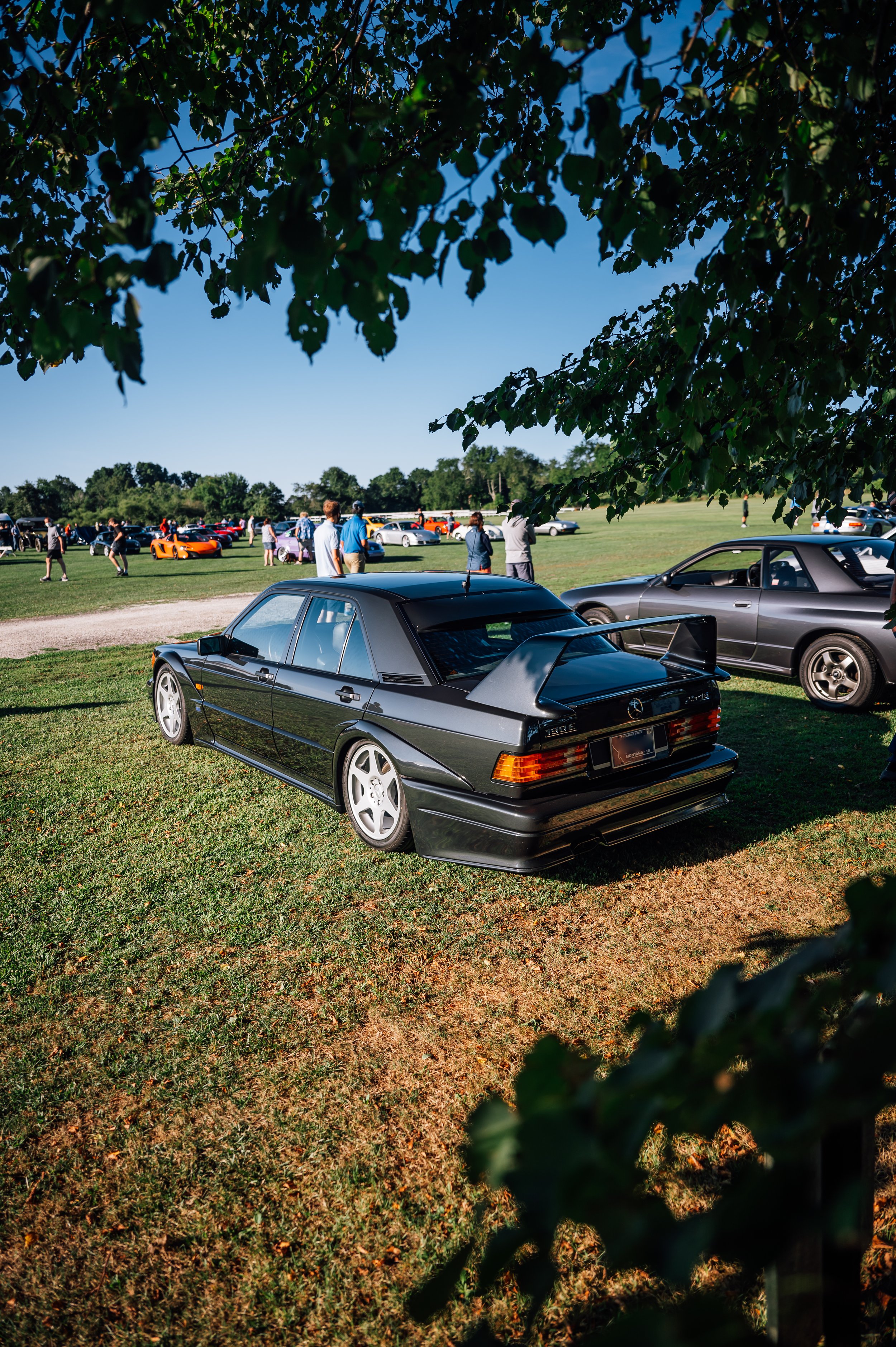1990 Mercedes-Benz 190e 2.5-16 Evolution II





High performance homologation car for the road
Helped brand-recognition of the AMG division
As desirable to collect as it is to drive on the track
As one of the most attractive yet outrageous looking cars that Mercedes has built in recent decades, the Mercedes-Benz 190e 2.5-16 Evolution II is the car that made the AMG badge a reality. Before the days of AMG, Mercedes was not regarded as a brand focused on performance, mainly known for their straight-forward business sedans. With its wide fender flares, massive rear wing and height adjustable suspension, the Evo II singlehandedly evolved Mercedes brand image, while also battling for the top spot in the highly competitive DTM championship.
One of the most popular racing leagues in the late 80’s and early 90’s was the Deutsche Tourenwagen Meistershaft (German Touring Car Masters), a series of touring car racing with entries from Alfa Romeo, Opel, BMW, Audi and others. or Following Audi and BMW’s late 80’s and early 90’s success in the DTM championship, Mercedes were set to try their hand in the championship. While they were competitive in both the 1990 and 1991 seasons, Mercedes didn’t achieve their goal of a series championship until 1992 with Klaus Ludwig in the drivers seat, representing the only series championship for Mercedes with their Evo II. All cars in the series were homologated road cars, meaning 500 of each race car had to be constructed in road legal form in order for the manufacturer to be eligible for the series, with any aerodynamic devices and performance enhancements utilized on the race car must be present on the road car as well.
Mercedes built 502 examples of the 190e 2.5-16 Evolution II for road use, with 500 painted in black like the car on display here, and two of them were finished in silver. From the standard 2.5-16 powerplant, the Evolution II incorporated a higher compression ratio, altered valve lift and timing, along with a modified intake tract and exhaust system to help the Evo II pump out 232 horsepower out of its four-cylinder engine. Perhaps the most advanced addition over the standard 2.5-16 was the self-leveling height adjustable suspension. This has become a commonality in supercars of today, though this technology was on the leading edge in the early 1990’s.
Due to its unique looks and scarce production numbers, the Evolution II has become a staple of the Youngtimers generation of cars, and a car that introduced Mercedes to a new genre of performance. The two poster cars of early 90’s DTM competition – the E30 M3 and the Evolution II – have each grown massively both in popularity and value over the last decade. Homologation specials are always rare and significant, though the car market has not seen a car as influential as the Evolution II, and without its success, the AMG division may not stand for what it represents today.
Specifications
Engine: 2.5 Liter Four-Cylinder
Horsepower: 232 @7200 RPM
Torque: 181 ft./lbs.
Transmission: Five-Speed Manual
0-60 MPH: 7 Seconds
Top Speed: 155 MPH

